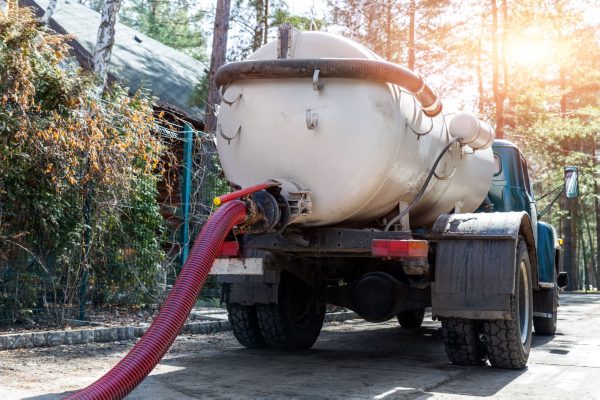
If you rely on a septic system for your home’s wastewater management, regular pumping is essential maintenance that keeps everything functioning properly. One common question homeowners ask is how long the process takes. This comprehensive guide breaks down everything you need to know about septic pumping timeframes to help you plan accordingly.
Understanding the Septic Pumping Process
Septic tank pumping involves removing accumulated solids and sludge from your tank to prevent system failure. The process is crucial for maintaining your septic system’s health and preventing costly repairs. Without regular pumping, solids build up and can cause backups into your home or leach field damage—issues that are far more time-consuming and expensive to fix than routine maintenance.
A professional septic service uses specialized equipment to access your tank, remove waste, and inspect system components. Understanding what happens during this process helps explain why certain timeframes are necessary.
Factors That Affect Septic Pumping Time
Several variables influence how long your septic pumping service will take. These factors can extend or reduce the time needed to complete the job properly:
- Tank size: Larger tanks (1,500+ gallons) naturally take longer to pump than smaller ones (750-1,000 gallons)
- Tank accessibility: Buried tanks requiring excavation add significant time
- Sludge level: Heavily filled tanks with thick sludge require more pumping time
- System complexity: Systems with multiple tanks or components need additional attention
- Weather conditions: Rain or extreme temperatures can affect working conditions
- Property access: Difficult-to-reach tanks require special equipment and more time
Each of these factors plays a role in determining the total time needed for your specific situation.
Average Septic Pumping Timing: What to Expect
For a standard residential septic system with good accessibility, the septic pumping timing typically ranges from 1-3 hours. This timeframe includes arrival, setup, the actual pumping process, basic inspection, and cleanup.
For a typical 1,000-gallon tank with normal sludge levels, the core pumping operation itself usually takes 20-30 minutes. However, the entire service includes important preparation and finishing steps that ensure the job is done properly.
Most homeowners should plan to allocate at least a half-day for the appointment, even though the active service time is shorter. This allows flexibility for any unexpected situations that might arise.
Preparing for Your Septic Tank Pumping
Proper preparation can significantly streamline the pumping process. Before your scheduled service, locate your septic tank and mark its access points. Clear any obstacles, vehicles, or landscaping that might block the technician’s access. If your tank lids are buried, consider uncovering them in advance (though professional services can handle this).
Ensure a clear path for service vehicles to approach within 100 feet of your tank. Most pumping trucks use large hoses that can reach this distance, but greater distances may require special equipment and more time.
By preparing properly, you can potentially reduce service time by 30-60 minutes, making the process more efficient for everyone involved.
The Step-by-Step Process: How Long for Septic Pump Service
Understanding the timeline for each phase helps set realistic expectations about how long for septic pump service. Here’s a breakdown of what typically happens:
Initial assessment (10-15 minutes): The technician locates your tank and evaluates access.
Tank preparation (15-30 minutes): Opening access lids and preparing equipment.
Pumping operation (20-45 minutes): The actual waste removal process.
Inspection (15-30 minutes): Checking tank condition, baffles, and inlet/outlet pipes.
Cleanup and documentation (10-15 minutes): Replacing lids, cleaning the area, and providing service documentation.
These timeframes can vary based on the factors mentioned earlier, but this gives you a general idea of the process timeline.
Time for Septic Pumping: Seasonal Considerations
The time for septic pumping may vary depending on when you schedule service. Spring and summer are popular seasons for septic maintenance, which can mean longer wait times for appointments. Winter pumping may present challenges with frozen ground or snow cover, potentially extending the service duration.
Many septic professionals recommend fall as an optimal time for pumping. The ground is usually dry, making tank access easier, and you’ll ensure your system is clean before winter weather arrives. Planning ahead for seasonal timing can make the process more efficient.
Some homeowners wonder if they need to be present during pumping. While not always necessary, being available at least at the beginning and end of service can be helpful for communication about any discovered issues.
Signs Your Tank Needs Immediate Pumping
Recognizing when your tank needs urgent attention can help you avoid emergency situations. Watch for these warning signals that indicate your system needs prompt pumping:
- Slow drains throughout your home
- Gurgling sounds in plumbing
- Sewage odors inside or outside
- Backing up of wastewater into drains or toilets
- Unusually lush, green grass over your drain field
- Standing water or soggy spots near your septic tank
- System alarm activation (if you have one installed)
When these symptoms appear, contact a septic professional immediately. Emergency pumping services typically arrive within 24-48 hours, though the actual service time may be longer than routine maintenance due to the problematic conditions.
San Diego Septic Pumping Time Guidelines
San Diego homeowners face unique considerations that affect septic pumping time. Our region’s clay soils and varied topography can impact tank accessibility and service duration. The average septic pumping time for San Diego properties ranges from 1.5-4 hours, depending on location and system configuration.
Dr. Septic specializes in efficient, thorough septic services throughout San Diego County. Our experienced technicians arrive on time and work diligently to minimize disruption to your day. We provide clear timeframe estimates before beginning work and keep you informed throughout the process.
Contact Dr. Septic today for prompt, professional service that respects your time. Our team can typically complete standard pumping services within 2 hours, getting your day back on track while ensuring your septic system performs at its best.
